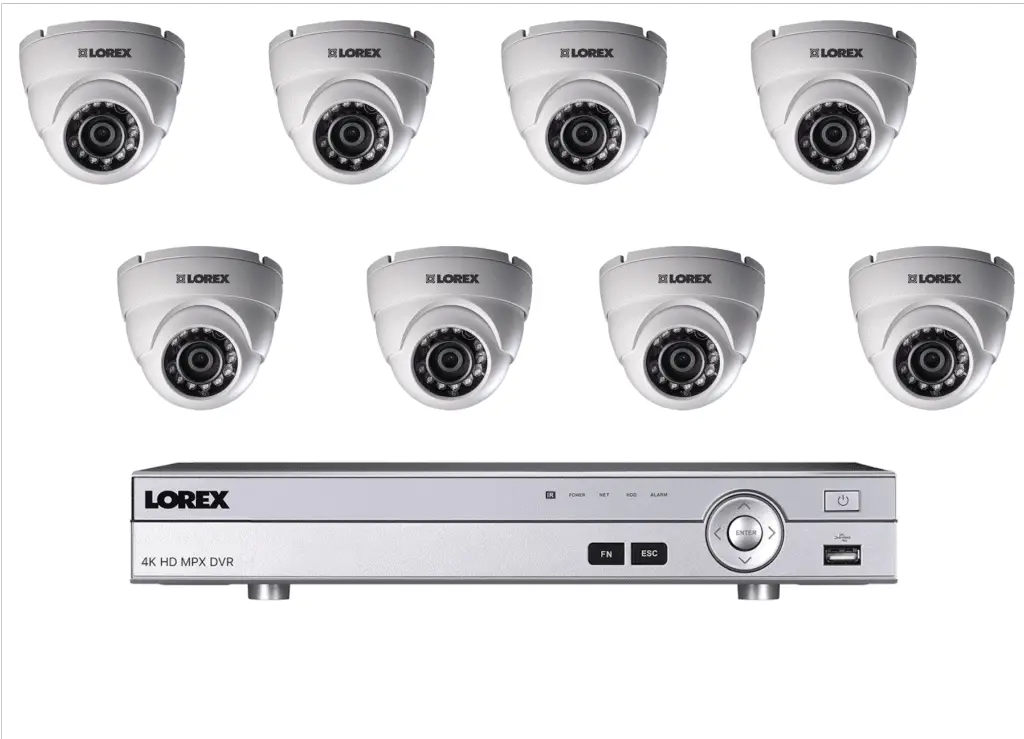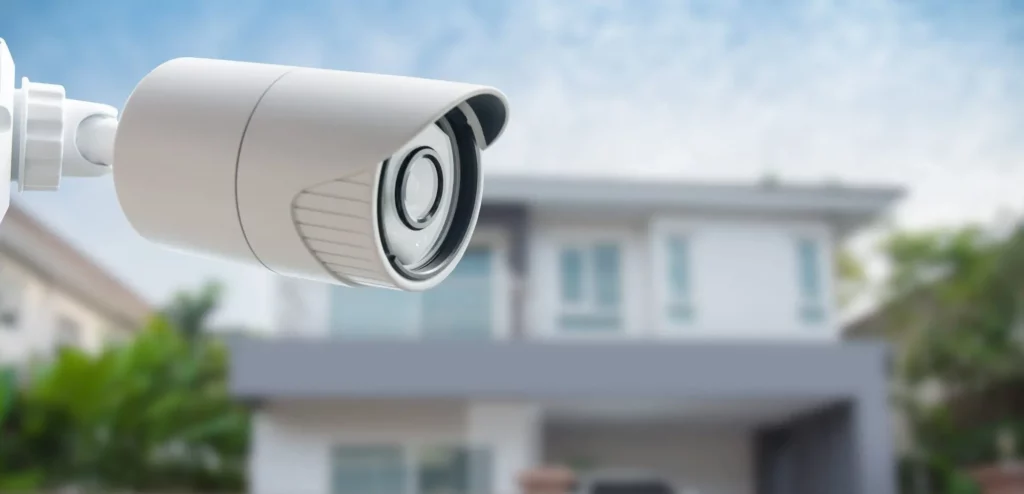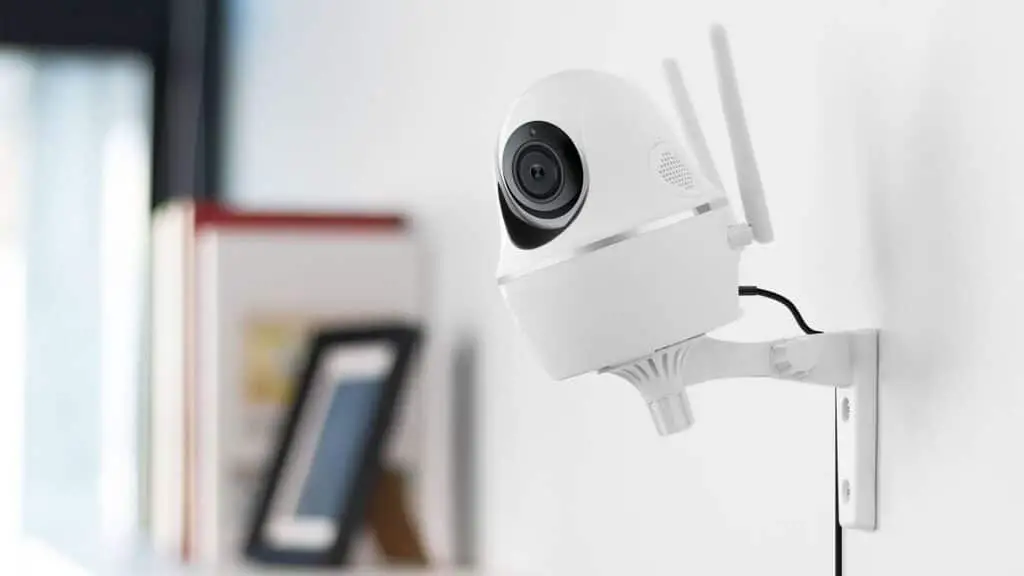Introduction
How Long Do Lorex Cameras Keep Footage: Among the many camera brands available, Lorex has gained recognition for its reliable and high-quality surveillance systems. When considering a security camera system, one important aspect to consider is how long the cameras retain recorded footage. Understanding the retention period of Lorex cameras’ footage is essential for ensuring adequate storage and access to recorded events.
Lorex cameras offer different recording modes, including continuous recording, scheduled recording, and motion-activated recording. Continuous recording captures footage 24/7, while scheduled recording allows you to specify specific time frames for recording. Motion-activated recording only records when motion is detected in the camera’s field of view. The duration of footage retention may differ based on the selected recording mode.
The video quality settings chosen for recording can also affect the storage capacity and, consequently, the retention period. Lorex cameras Higher video resolutions, such as 1080p or 4K, produce larger file sizes, reducing the overall storage duration compared to lower resolutions.The size of the hard drive in the DVR or NVR determines how much footage can be stored. Lorex camera systems typically offer different storage options, allowing users to select the capacity that suits their needs. The more significant the storage capacity, the longer the footage can be retained before older recordings are overwritten.

Is security camera footage kept forever?
Generally, security camera footage lasts from three months to one year based on cases. The old footage is deleted automatically to create space for new recordings. Note that each security camera is different and storage space too. A few businesses and financial institutions have a large amount of storage capacity.
Recording system storage capacity determines security camera footage retention. Security camera footage is stored on hard drives or NVRs. These storage devices can only hold so much data before overwriting earlier video. How long footage can be retained depends on system storage.
Security camera footage retention varies by mode and setup. Cameras that record 24/7 demand a lot of storage and may shorten retention periods. Motion-activated or planned recording, where cameras only record when motion is detected or during defined durations, can conserve storage capacity and lengthen retention.
Security camera footage retention is often influenced by legal and regulatory needs. Businesses and organizations like banking, healthcare, and law enforcement must keep video recordings for a certain time in many areas. These rules aid investigations, conflict resolution, and judicial actions. Data retention violations may result in legal action.
Does Lorex save videos?
Lorex cameras either record directly to a recorder or to an on-board MicroSD card. Lorex does not store or retain video footage. Your video remains yours. Only you can control who has access to it.
Lorex camera systems typically include local storage options for saving recorded videos. This involves using a Digital Video Recorder (DVR) or Network Video Recorder (NVR) with a built-in hard drive. The capacity of the hard drive can vary based on the specific model and can range from several terabytes to accommodate a significant amount of footage. The recorded videos are stored directly on the hard drive, providing immediate access to the locally saved recordings.
Lorex cameras offer various recording modes and settings that allow users to customize their video storage preferences. These modes include continuous recording, scheduled recording, and motion-activated recording. Continuous recording captures footage 24/7, ensuring comprehensive coverage but utilizing storage space quickly.
Scheduled recording allows users to specify specific timeframes for recording, optimizing storage efficiency. Motion-activated recording saves videos only when motion is detected, conserving storage capacity. Users can choose the most suitable recording mode based on their specific surveillance requirements.
DVR or NVR storage capacity determines Lorex camera video storage duration. Older recordings may be overwritten to create room for fresh ones when storage is full. Lorex cameras include circular or loop recording, where new recordings overwrite previous ones. Recording settings, storage capacity, and camera count affect retention duration.
Are Lorex cameras legal?
Lorex goods are for consumers and businesses, not US governmental governments, federally financed programs, or NDAA contractors.
Different jurisdictions regulate Lorex security cameras and privacy. These laws balance public safety and privacy. The privacy rules in your country must be researched and understood. Laws may regulate where cameras can be installed, what can be monitored, and how footage can be utilized.
Surveillance cameras, especially in settings where people expect privacy, may require consent in many jurisdictions. It’s crucial to know the local consent requirements before installing.
Private environments like homes and workplaces may require specific consent from those being monitored, whereas public spaces without a reasonable expectation of privacy may not.
Lorex cameras put on public or private property may be illegal. Surveillance cameras are legal in public spaces like streets and parks, where people expect less privacy. To prevent privacy invasion, limits may apply. Usually, private property owners or authorized individuals must permission.
Do Lorex cameras continuously record?
Get an eight-camera DVR or NVR system for as low as $300. Lorex offers a wide variety of security cameras with features ranging from simple 1080p HD video to 4K UltraHD resolution. In general, Lorex cameras record continuously, ensuring you don’t miss any important events.
Lorex cameras can record continuously. The cameras can record video 24/7 in this mode. For complete coverage, continuous recording ensures no incident or activity is missed. Continuous recording creates a continuous stream of video material, hence it uses more storage space than other modes.
Motion-activated Lorex cameras are available. These cameras start recording when motion is detected in their range of vision. Only collecting footage when there is action or movement saves storage space. In low-activity regions, motion-activated recording captures important events and avoids the need to examine long periods of inactivity.
Scheduled recording is another Lorex camera function. This feature lets users set camera recording times. Users can tailor the recording schedule to their surveillance needs. Scheduled recording is useful during high-activity periods or critical surveillance times. It optimises storage by recording only during specified times.
Do Lorex cameras have Wi-Fi?
Lorex Wi-Fi Security Surveillance Cameras are plug-and-play home security solutions that connect to a wireless network in minutes and record to an on-board microSD card.
Lorex camera systems also offer options for wired connections, primarily through Ethernet cables. Wired connections can provide a more stable and consistent network connection, which may be beneficial for high-resolution video streaming or areas with potential Wi-Fi signal interference. Wired connections ensure a reliable and continuous network link between the camera and the network infrastructure. Cameras can be connected directly to an NVR or router with NVR capabilities via Ethernet wires.
Some Lorex camera systems provide hybrid connectivity options, allowing users to choose between Wi-Fi and wired connections based on their preferences and requirements. This flexibility enables users to select the most appropriate connectivity method for each camera within their surveillance system. Cameras near the network infrastructure can use Ethernet connections, while those in remote or difficult places can use Wi-Fi.
Wi-Fi networking is convenient and flexible, but there are certain considerations. Distance from the router, signal interference from other devices or structures, and physical barriers might affect Wi-Fi performance. For reliable video streaming and remote access, Lorex cameras need a strong and stable Wi-Fi signal. The number of devices on the Wi-Fi network can also effect bandwidth and video quality.

Can you view Lorex cameras remotely?
Live View & Playback
Lorex apps allow you to stay connected to your security device or system from virtually anywhere in the world. See exactly what your cameras see, or watch recorded playback of past events, right from your mobile device.
Lorex cameras offer remote viewing capabilities through mobile applications available for smartphones and tablets. These applications, compatible with both iOS and Android devices, allow users to access their Lorex camera feeds from virtually anywhere with an internet connection. By connecting to the Lorex camera system through the mobile app, users can view live video streams, playback recorded footage, and even control certain camera settings remotely.
In addition to mobile applications, Lorex camera systems often provide the option to access camera feeds through web browsers on computers or laptops. Users can log in to their Lorex accounts via the Lorex web portal and access the camera feeds using a compatible browser. This web-based remote access allows users to monitor their cameras, review recordings, and manage system settings directly from their computer.
Lorex camera systems may offer cloud connectivity options to enhance remote viewing capabilities. By leveraging cloud services, users can securely store their camera recordings and access them remotely through a web-based interface or mobile app. Cloud connectivity ensures that users can remotely view and manage their camera feeds without the need for complicated network configurations or port forwarding.
How far can Lorex camera detect motion?
50ft
14.1Â Â Ensuring Accurate Person & Vehicle Detection
Choose a location where objects of interest will be no further than 50ft (~15m) from the camera. Angle the camera so that objects of interest appear in the bottom â…” of the camera image.
The motion detection range of Lorex cameras depends on the camera model, lens focal length, and installation situation. Generally, Lorex cameras have a detection range that extends from a few feet to several dozen feet, depending on the camera’s specifications. It is important to refer to the camera’s documentation or specifications to determine the specific detection range for a particular model.
The field of view (FOV) of Lorex cameras plays a crucial role in motion detection. Cameras with wider FOV can cover a larger area, increasing the chances of detecting motion within that range. Cameras with adjustable lenses or pan-tilt-zoom (PTZ) capabilities provide flexibility in adjusting the FOV to suit specific monitoring needs. Understanding the FOV of Lorex cameras allows users to position and orient the cameras effectively for optimal motion detection coverage.
The effectiveness of motion detection can be influenced by environmental factors such as lighting conditions, weather conditions, and potential obstructions. Poor lighting or extreme weather conditions may affect the camera’s ability to accurately detect motion. Additionally, objects such as trees, foliage, or other physical obstructions within the camera’s field of view can impact the motion detection range. It is important to consider these factors when installing Lorex cameras to ensure effective motion detection.
Do Lorex cameras have night vision?
Most security cameras from Lorex use active night vision to see at night. You may have noticed tiny LEDs around the lens of security cameras. These are infrared LEDs (Light Emitting Diode), which act a kind of flood light that bathes the scene in front of the camera in infrared light.
Lorex cameras are equipped with infrared (IR) night vision technology, allowing them to capture clear images in low-light or complete darkness. IR night vision utilizes infrared light emitted by built-in IR LEDs surrounding the camera lens. This technology enables the camera to “see” in the dark by illuminating the scene with infrared light, which is invisible to the human eye but detectable by the camera sensor.
Lorex cameras typically provide a range of visibility for night vision, allowing users to monitor their surroundings even in pitch-black conditions. The range of visibility can vary depending on the specific camera model and the number of IR LEDs integrated into the camera design. It is important to refer to the camera’s documentation or specifications to determine the night vision range for a particular model.
Lorex cameras deliver high-quality images in night vision mode, allowing users to distinguish details and objects in low-light conditions. The camera’s sensor and lens quality, along with the capabilities of the IR LEDs, contribute to capturing sharp and clear images during nighttime surveillance. The resolution and clarity of the images may vary depending on the camera model and its specific specifications.

Conclusion
By selecting the appropriate recording mode, such as continuous, scheduled, or motion-activated recording, users can control how long footage is retained. Additionally, the video quality settings and storage capacity of the local storage device impact the overall duration of footage retention. Moreover, it is worth mentioning that Lorex cameras often provide additional features to help manage recorded footage effectively.
For extended storage duration and off-site backup, Lorex cameras often offer cloud-based storage options. Users can upload their recorded footage to secure online servers, which may provide additional retention beyond the capacity of the local storage device. The specific retention period for cloud-based storage depends on the chosen subscription plan. For instance, some systems offer motion security camera search functionality, allowing users to quickly locate specific events within the recorded footage, thus optimizing the reviewing process.
The retention period of Lorex cameras’ footage is a crucial consideration for various applications. For instance, in a residential setting, homeowners may want to keep recorded footage for a few weeks or months to review any security incidents or suspicious activities. On the other hand, businesses, such as retail stores or banks, might require longer retention periods to comply with legal regulations or investigate incidents that occurred in the past.

